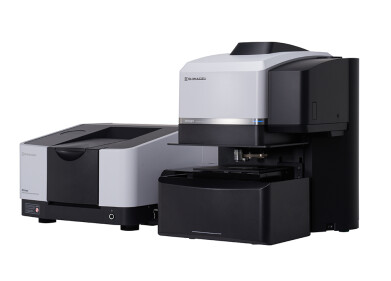Mass Spectrometry & Spectroscopy
Olive oil: real or fraudulent?
May 19 2016
Fourier transform infrared (FTIR) spectroscopy is an attractive practice for testing the authenticity of food produce. It is simple, rapid and provides non-destructive measurements [1].
Extra virgin Olive oil is a high value flagship product in European countries such as Spain, Italy and Greece and production volumes are low. To maximise profits, some suppliers have been known to adulterate their olive oil with cheaper alternatives such as palm, peanut or even industrial oil.
In 2013 the Workshop on Olive Oil Authentication in Madrid released figures that showed one in four olive oils sampled in Spain, and nearly one in three in Canada, failed official fraud tests [2]. The contamination of extra virgin olive oil for profits is rife and has led to a demand for more stringent testing [3]. A research project on olive oil authentication has been included in the European Union’s Horizon 2020 research program.
FTIR is an excellent analysis method for oils. It only requires minimal sample preparation and is able to detect and quantify adulterants by identifying ‘tell-tale’ functional groups using a fingerprint technique.
In a 2015 study examining the adulteration of extra virgin olive oil with peanut oil [3] an FTIR method with an ATR sampling technique and multivariate analysis, was developed. The study examined two sets of frequencies to establish a robust regression model, which were from 600 to 1,800 cm−1 in the fingerprint region and from 2,750 to 3,050 cm−1 in the functional group region. A method was developed that could detect contaminant oils at a level of 0.5% v/v and the FTIR spectra obtained confirmed that every oil has a unique fingerprint.
The Pearl™ can be used to establish the authenticity of olive oil samples in their native state. Using IR transmission, it can attain up to a 10x higher spectral resolution than ATR.
The Pearl's’ high accuracy means the chemical fingerprint of low-grade oils can be detected even at low concentrations and its design means even the most viscous of oils are removed easily following measurement; which prevents error in future experiments.
References
Rodriguez-Saona, L.E. and Allendorf, M.E., Use of FTIR for Rapid Authentication and Detection of Adulteration of Food, Food Science and Technology, Annual Review of Food Science and Technology, Vol. 2: 467-483 (April 2011)
Butler J., October 4, 2013, Scientists Pool Expertise in Fight Against Fake Olive Oils, Olive Oil Times, http://www.oliveoiltimes.com/olive-oil-basics/madrid-meeting-olive-oil-authentication/36606 retrieved 26th February 2016
Vasconcelosa,M., Coelhobc, L., Martins de Almeidabe J.M.M, Study of adulteration of extra virgin olive oil with peanut oil using FTIR spectroscopy and chemometrics, Cogent Food & Agriculture, Volume 1, Issue 1, 2015.
Digital Edition
International Labmate Buyers' Guide 2024/25
June 2024
Buyers' Guide featuring: Product Listings & Manufacturers Directory Chromatography Articles - Enhancing HPLC Field Service with fast-response, non-invasive flowmeters - Digital transformatio...
View all digital editions
Events
Jul 07 2024 Dublin, Ireland
Jul 20 2024 Denver, CO, USA
Jul 21 2024 Cape Town, South Africa
Jul 28 2024 San Diego, CA USA
Jul 30 2024 Jakarta, Indonesia







24_06.jpg)



.jpg)








